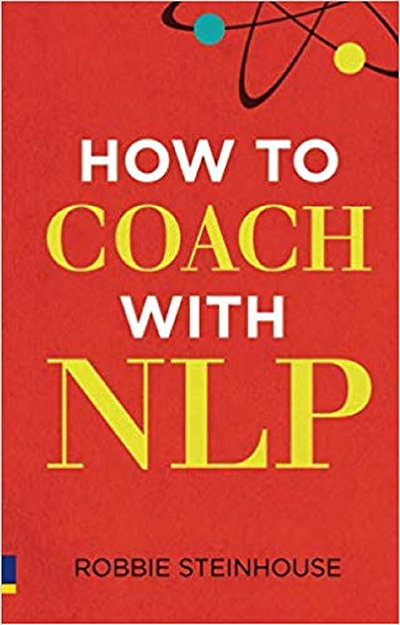Mentalisation Based Therapy Processes for Mental Health

This blog covers how aspects of NLP can be used to help to manage mental health, and discusses an accompanying process called “Mentalisation Based Therapy”.
Mental Health is a Spectrum
Psychology often seems to imply that there are two groups of people – those with mental health issues and those who are well and happy. A good example of this is Attachment Theory, which either defines people as secure or insecure/avoidant.
I don’t believe this black and white distinction. Instead, I prefer the idea of a continuum, a line:
• At one end, are those individuals with a few symptoms;
• In the middle are those individuals who have frequent symptoms, but whose lives are not significantly disrupted by these symptoms; and
• At the other end of the spectrum are individuals with significant and intense symptoms, which cause significant disturbances to their lives.
(I do however believe that Attachment Theory has significant benefits, and cover these below).
What is Mentalisation Based Therapy?
Mentalisation Based Therapy (“Mentalising”) was invented because two psychologists, Peter Fonagy and Anthony Bateman, noticed common features in their clients, which were not an accepted part of their professional training as practicing clinicians.
They discovered that their clients had errors in thinking which lead them to be haunted by extremely negative emotional states. Many of the clients had profoundly troubling backgrounds, where they had not bonded with their early caregivers.
However, when they were taught the skills of mentalising, within their relationship with a trusted therapist, their lives were transformed.
Mentalising is, in some ways, the goal of therapy: to enable someone to become aware when they are in a negative state and not to become overwhelmed by it.
How can you Mentalise?
To Mentalise, what is required is:
• A level of self-awareness and detachment. This enables a contextualisation of states and a positive belief that they are transitory and will pass;
• To view the states of others with a similar level of awareness and detachment;
• To learn how others’ states, in turn, impact upon ourselves;
• To understand behaviour as nuanced; and
• To recognise that holding fixed attitudes is unhelpful.
How can NLP help?
Mentalising skills have similarities to the NLP perceptual positions, where you can see a situation from three different perspectives.
1. In the 1st position you determine what is important to you and have a sense of power.
2. In the 2nd position you have empathy for another person and the ability to consider the issue from their perspective.
3. The 3rd position enables a detached perspective or ‘helicopter view’ where you able to see yourself from the outside. This helps keep strong emotions from clouding your judgement.
It is this 3rd position which is the most similar to Mentalising, as it enables a person to use their thinking abilities to see ‘the bigger picture’ and calm their emotional system.
Dimensions of Mentalising
There are Four Dimensions of Mentalising. The diagram below provides a helpful summary of them and how they can help explain and improve mental health.
Implicit-Automatic ⟺ Explicit-Controlled
Mental interior focused ⟺ Mental exterior focused
Cognitive agent ⟺ Affective self
Other focus ⟺ Self focus
1. Implicit/Explicit
Explicit or conscious Mentalising is when we use our mind to analyse, consider and work out ways to act thoughtfully. Implicit, or unconscious mentalising is the habitual skills we have developed that regulate our emotions and help predict other people’s behaviour, such as automatically manoeuvring to avoid a bad driver.
The general principle is that we want to be somewhere in the middle, able to act automatically or thoughtfully as the situation best requires.
Problems emerge when people polarise. Those who are too much toward implicit behave impulsively and come across as overly reactive and unpredictable. Those closer to the explicit side of the spectrum become over-analytical and racked by indecision.
2. Interior/Exterior
We can become skilled at predicting other people’s intentions and states, but, to some degree, these will always remain opaque. We can never really know what goes on inside another person.
Exterior is specifically what you see in others: their voice tone, facial expressions, gestures and other concrete behaviours.
Interior is the model you hold of their interior landscape; what are their thoughts, feelings, beliefs, experiences and attitudes?
To navigate the world, we form complex judgements based on both external behaviour and internal assumptions. This can all go wrong when we become too set in our ultimately subjective interpretations.
An example of a polarising exterior focus is if someone says to themselves, “He raised an eyebrow, which means he thinks I am stupid”. An example of a polarising interior focus would be prejudice.
In both cases, a deluded form of certainty is shown.
3. Cognitive/Affect
Basically, this means ‘too much in your head’ or ‘too much in your feelings’.
Affect polarised means becoming consumed by negative feelings, entering very pessimistic states and losing hope: “I will always feel this way.”
Cognitive polarising means lacking a sense of authentic connection to experiences and feelings – a make-believe world of fantasies, where playing out various scenarios can take over.
A desirable level is in the middle – a detached perspective with the ability to see yourself from the outside.
4. Self/Other
Attachment theory (mentioned above) describes how young children bond with caregivers and are gently taught ‘this is where you begin and I end’. If this separation or individuation happens under stress, they may perceive the world as a hostile place and find it hard to form lasting relationship later in life.
Such people are defined as insecure (fusers) or avoidant (isolators). In both cases the adult finds relationships challenging.
The ‘Other’ polarity is like a fuser. They feel controlled by someone else’s perceived needs and feelings.
The ‘Self’ polarity is like an Isolator. They likewise believe they are controlled by someone else’s perceived needs and feelings, but instead of clinging to that person, their instinct is to run away and have nothing to do with them.
What I have learnt from Mentalising
It can be very helpful to identify our own pattern(s).
I would say that I polarise towards cognitive, trying ever harder to rein my feelings in. A tipping point is reached when I can no longer contain my feelings and then switch to becoming very angry or upset (slipping over to the Affect polarisation).
My advice with regards to Mentalising is to stay in the middle. To use your mind, but also accept that negative feelings are normal and cannot be fully and immediately calmed by clever thinking. They take time to pass and it require some resilience to simply accept negative emotional states.
At the same time, it is important not to feel shame in the face of these patterns – we all will have some of these and learning to managing them is far more helpful that heating them up further with shame.
Summary: How Mentalising Can Help You
• Mentalising is a skill that we all have to great or lesser degrees.
• However, when someone is from an abusive background, they are far less likely to engage in healthy Mentalising and will, instead, make impulsive decisions that can lead to huge problems in their lives.
• Our misery is often caused by holding fixed points of view – “For there is nothing good or bad, but thinking makes it so”, as Shakespeare said.
• We make our ‘own cage’ by seeing a situation in black and white terms and not being able to take a sceptical, yet optimistic view (with a touch of humour).
• This is where Mentalising comes in. By Mentalising, and especially by learning the ‘Cognitive’ abilities, we can gain an objective perspective not only for our own behaviour, but for the behaviour of others.
I believe we all can benefit from learning these skills. In many ways, this is the goal of NLP training – to make our lives happier, especially our relationships.
Did you like this post?
Then check out our events and courses!
Where to find us
For posts, events, free open days and more, follow NLP School on:
Instagram: @nlpschoolYouTube: NLP School
What to read next
How NLP Can Help with Your Anxiety
How NLP Can Help With Depression









